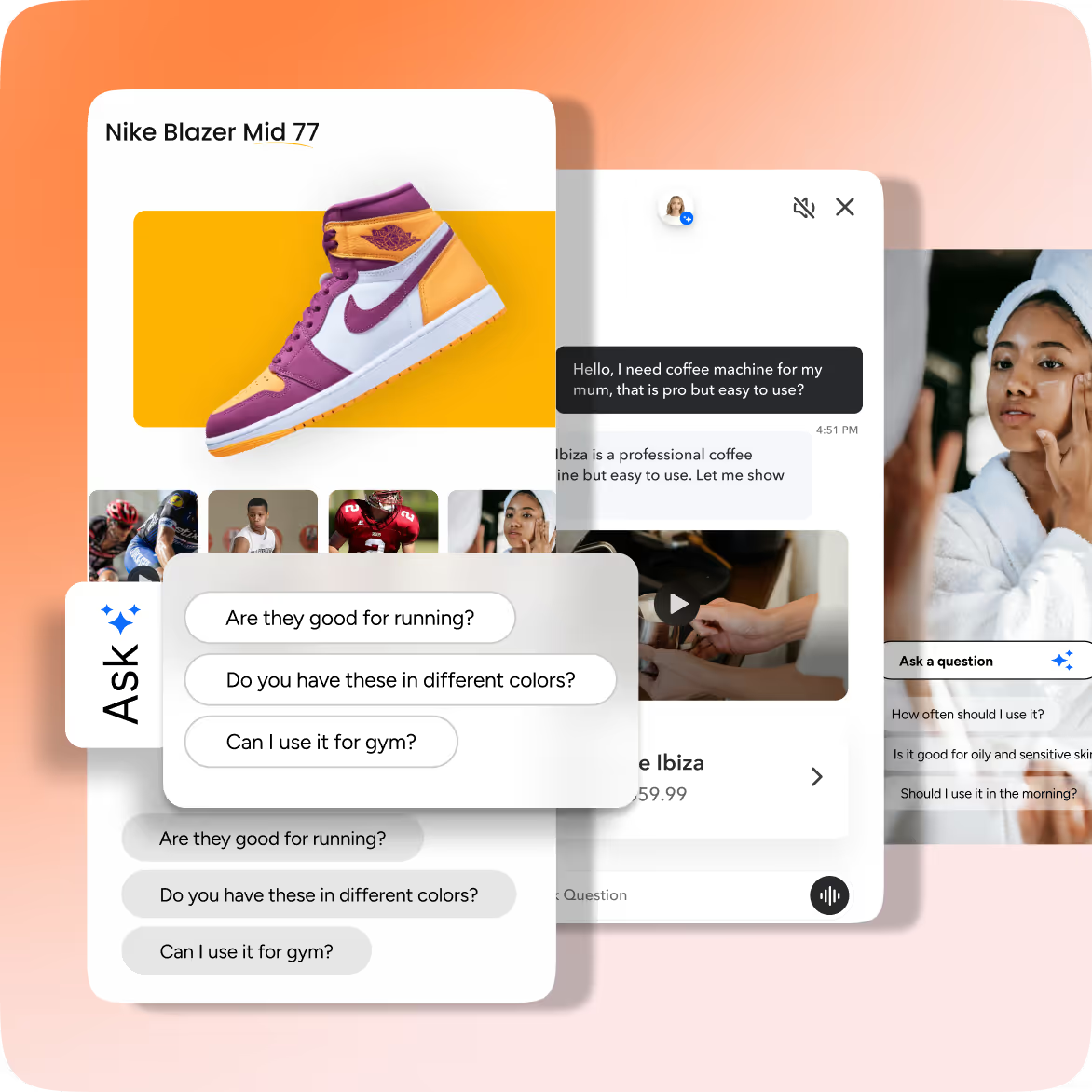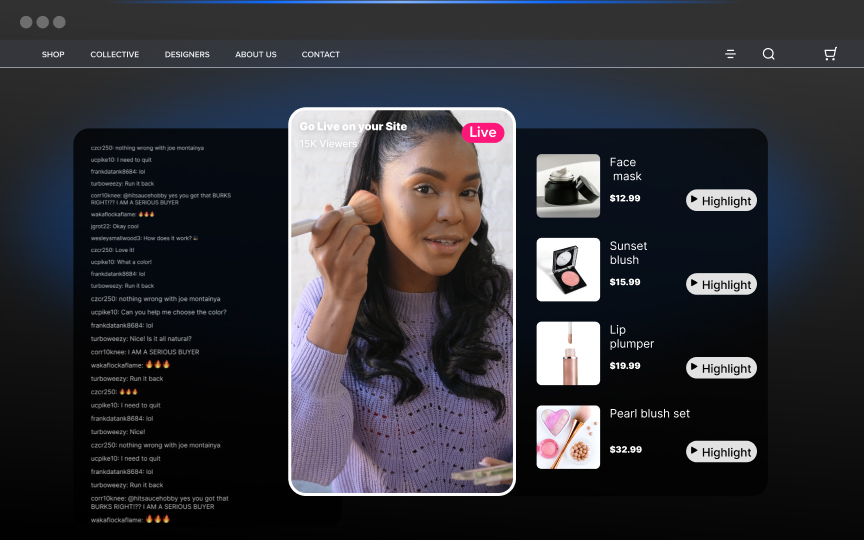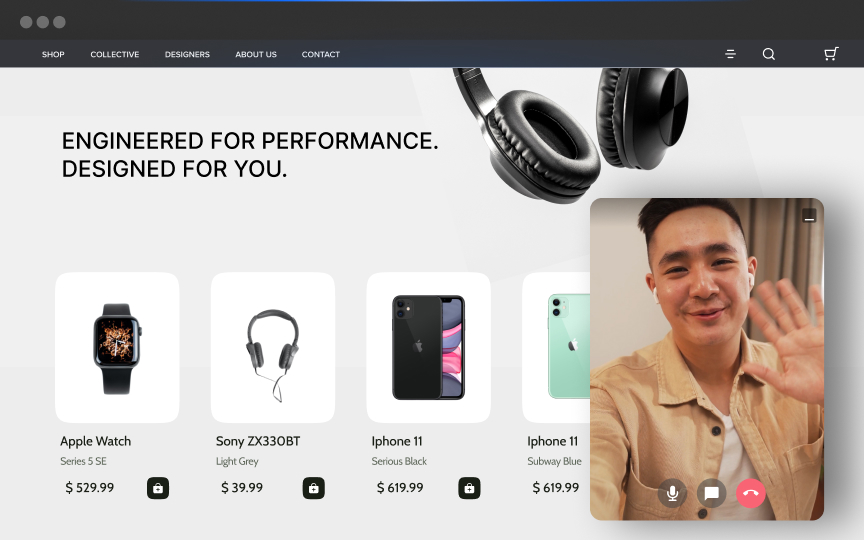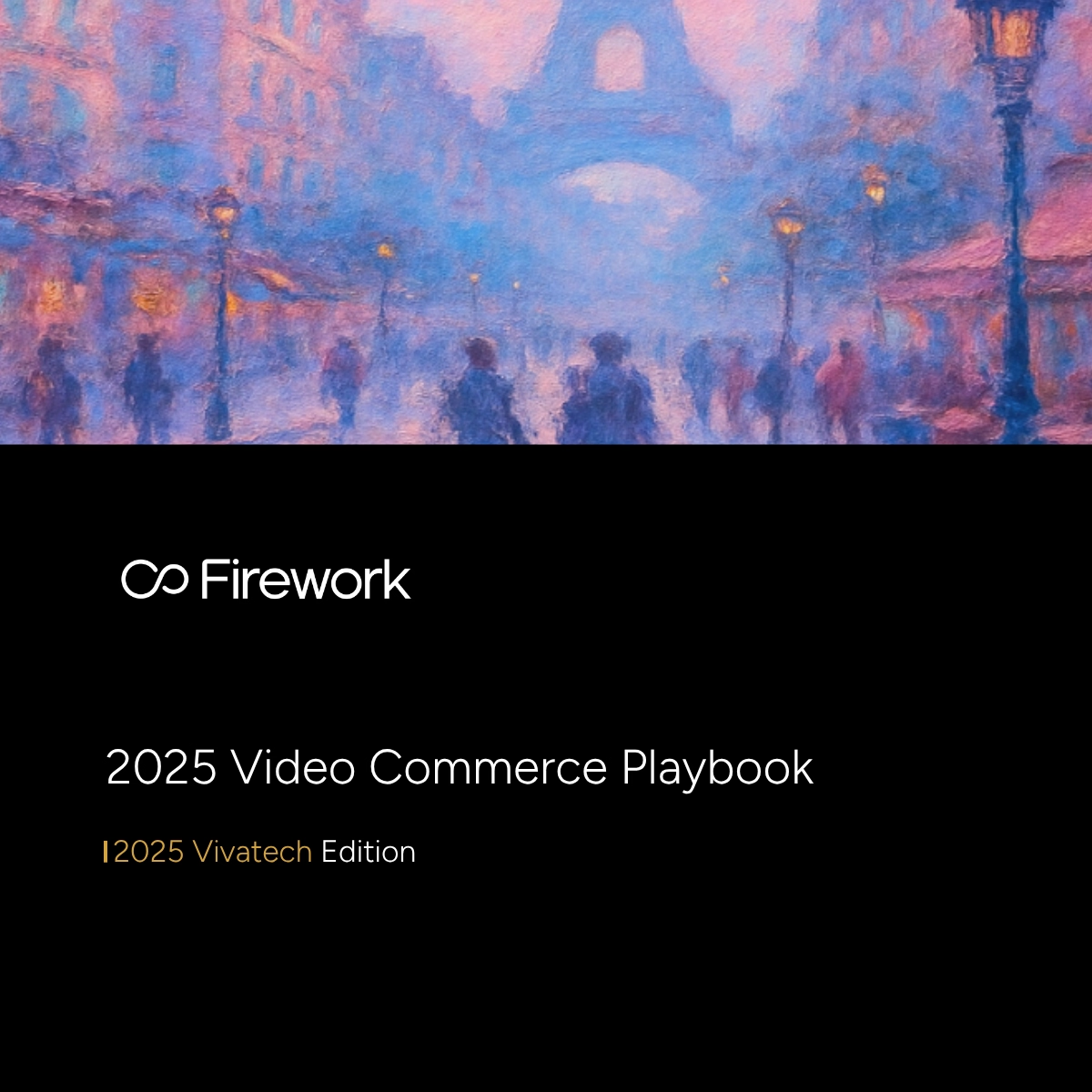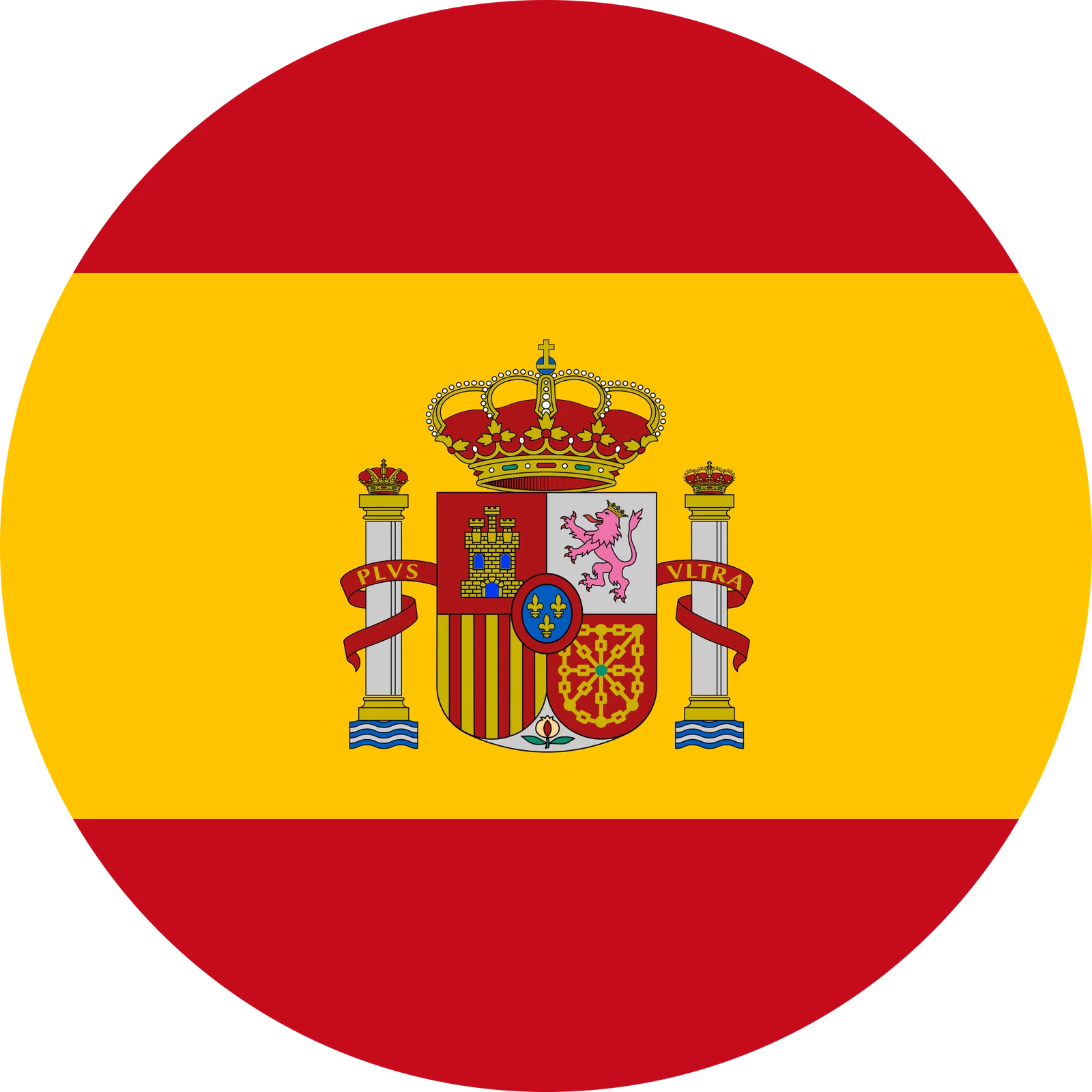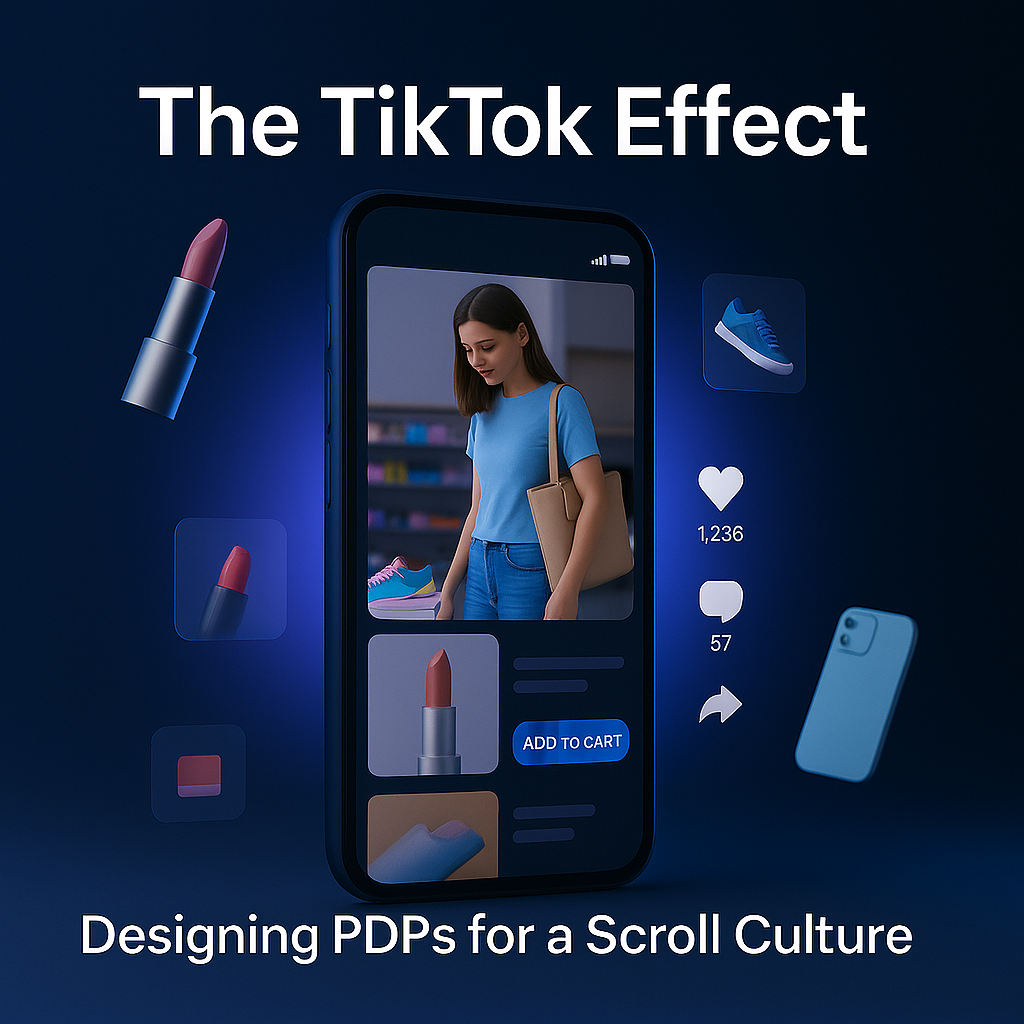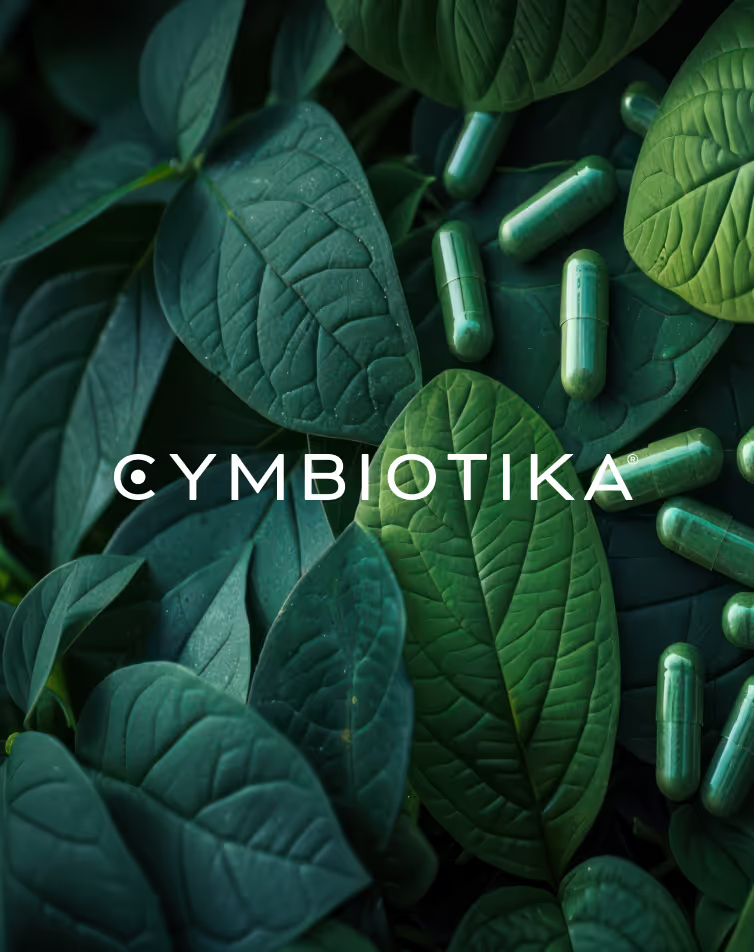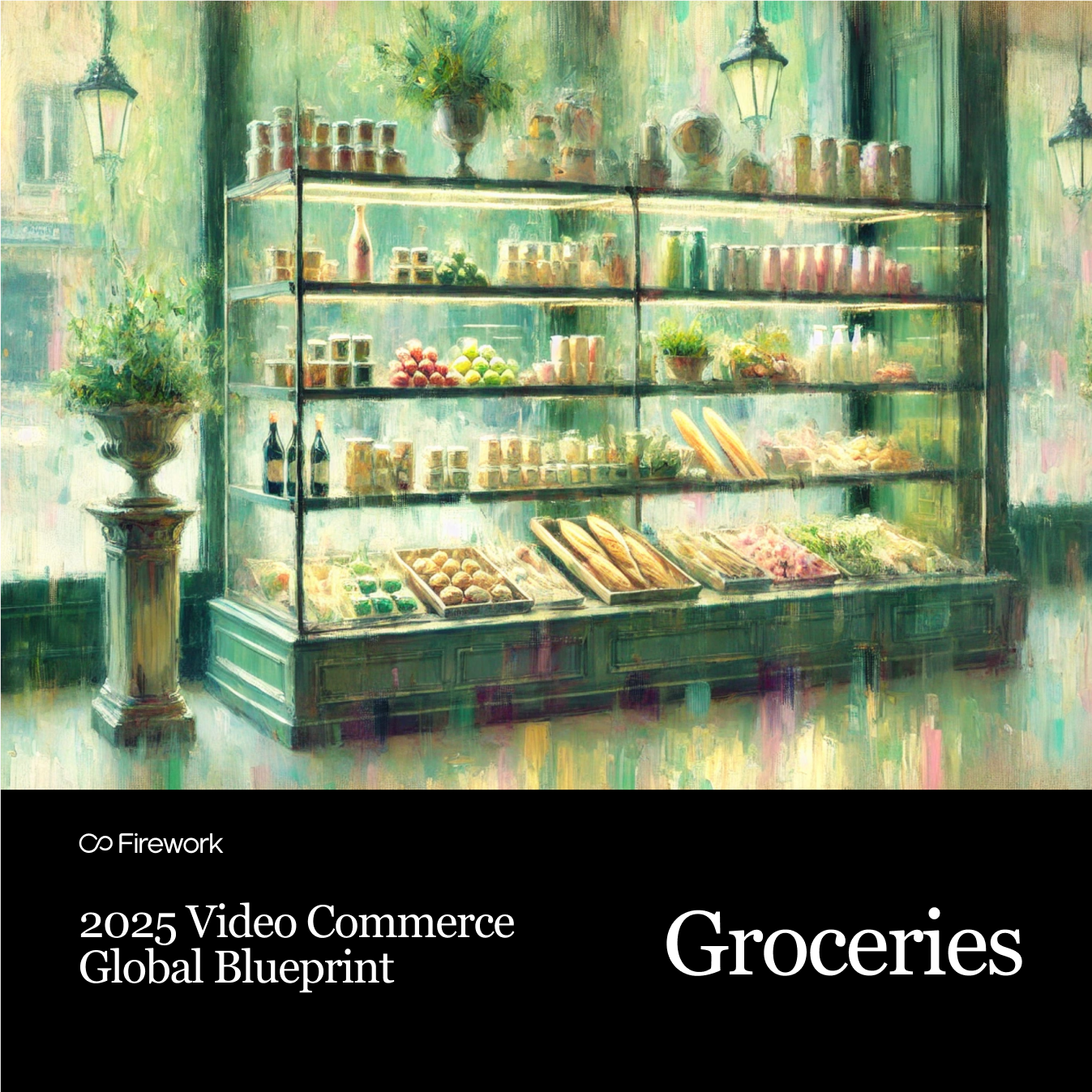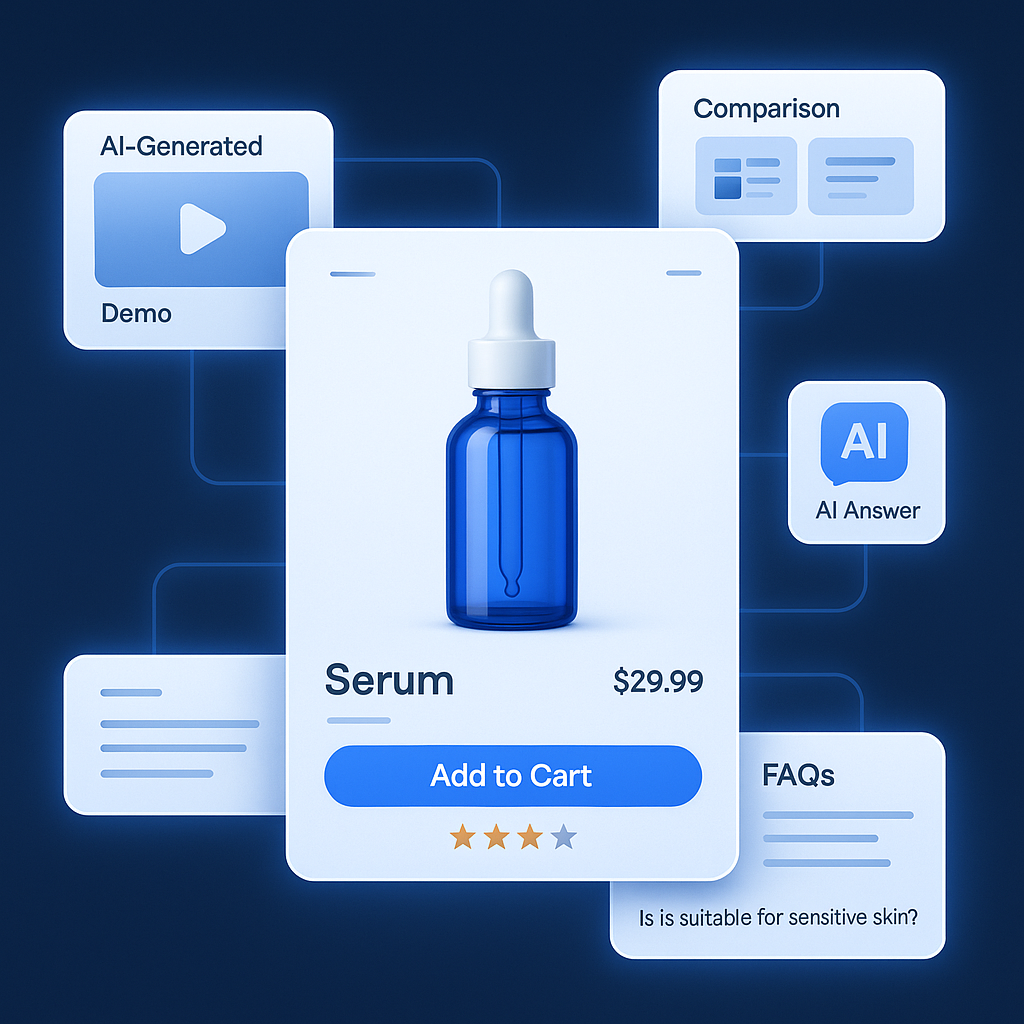TikTok didn’t just introduce a new content format, it introduced an entirely new way of thinking, consuming, and deciding. The 60-second loop, the swipe reflex, the raw authenticity, all of it has quietly reprogrammed how people discover products, process information, and engage with brands.
In 2025, ecommerce teams face a fundamental truth: shoppers no longer browse, they scroll. The same behaviors that drive engagement on social platforms now drive conversions in retail. Attention is fragmented, discovery is continuous, and purchase intent is formed in the first three seconds of visual impact.
And nowhere is this transformation more visible than on the Product Detail Page (PDP), the digital storefront that once served as the static “last step” of the shopping journey, now reborn as a dynamic, story-driven experience designed for a scroll-native audience.
1. The Scroll Mindset Has Gone Mainstream
We live in a world of infinite content and microscopic attention spans. TikTok, YouTube Shorts, and Instagram Reels have trained users to make instantaneous decisions.
The average Gen Z user consumes over 4 hours of short-form video per day, and that scroll rhythm now extends to every online behavior, including shopping. Consumers expect instant immersion: visuals that move, stories that unfold in seconds, and the ability to explore without friction.
Traditional PDPs with rows of photos, product descriptions, and “add to cart” buttons feel like relics of a slower digital age. They assume shoppers have time to stop, read, and consider. But in a scroll culture, you have seconds to capture attention and guide decision-making.
That’s why the world’s leading ecommerce brands are designing PDPs like social feeds, vertical layouts, autoplay video, infinite scroll, and interaction at every level. These aren’t product pages anymore. They’re content experiences optimized for the way consumers naturally behave.
2. From Descriptions to Discovery
Consumers no longer read about products they watch. They want to see how a product looks, moves, reacts, and feels in real life. TikTok popularized the “show, don’t tell” approach, and ecommerce has followed suit.
Instead of static photo galleries or long copy blocks, modern PDPs are transforming into micro-entertainment spaces that blend storytelling and utility.
- Dermalogica has introduced creator-style product try-ons and product demonstrations directly within PDPs, merging social content with ecommerce context.
- Naturium includes short videos featuring a product expert sharing product benefits.
This visual-first approach builds trust faster than text ever could. It’s how a brand proves value in a scroll-dominated world, by replacing explanation with demonstration.
3. PDPs as Mini-Feeds
A static PDP is a dead end. A scrollable PDP is a discovery journey. Forward-thinking brands are reimagining the product page as an infinite, feed-like experience, where every scroll reveals a new story, use case, or piece of content.
Imagine a PDP structured like this:
- The hero section auto-plays a short vertical video introducing the product.
- As you scroll, you see quick cuts of user-generated clips, creator tutorials, or real-world usage.
- Next comes a layer of contextual data with ratings, FAQs, how-to content, embedded naturally in the visual flow.
- Finally, an interactive “Add to Cart” button overlays the content so action never breaks immersion.
This “content stack” approach keeps users engaged 3–5x longer on the page and turns what used to be the end of the funnel into the center of it.
4. The Role of Authenticity and Creator Aesthetics
The social media generation doesn’t want perfection, it wants personality. TikTok changed the visual language of trust. What once looked “premium”, polished lighting, scripted voiceovers, cinematic edits, now feels detached and artificial. Authenticity has become the new currency of persuasion. That’s why brands are swapping stock imagery for creator-led visuals that mirror the aesthetic of the feed.
This “creator aesthetic” bridges the gap between commerce and culture. It tells shoppers: you can trust this because someone like you already has.
5. Video as the New Product Spec
Where specs once lived in bullet points, they now live in pixels. Shoppers don’t read “lightweight serum”, they watch it glide across skin. They don’t parse fabric composition, they see it stretch, shimmer, and breathe.
Video is now the most efficient form of product communication. It delivers context, proof, and emotion simultaneously, in seconds.
And when paired with interactivity, clickable tags, pause-to-buy overlays, or embedded FAQs, these videos transform passive watching into active shopping.
6. Turning PDPs into Engagement Loops
The most successful product pages don’t stop at conversion, they evolve into continuous engagement ecosystems.
Modern PDPs are starting to integrate AI shopping assistants, and personalized video content that extend the customer relationship beyond the page.
Imagine this journey:
- A shopper lands on a PDP after seeing a TikTok video.
- An AI assistant appears, ready to answer follow-up questions like “Is this safe for sensitive skin?” or “Which size do you recommend?”
- The shopper watches a short creator tutorial while adding the product to cart.
- After purchase, they receive video-based onboarding or usage tips that link back to the brand community.
Brands like Beachwaver perfect this strategy.
7. Designing for Motion, Emotion, and Momentum
Designing for the scroll generation means abandoning rigid web templates and thinking in flows, not frames.
Scroll-native PDPs use motion as structure and emotion as strategy. They’re built like stories: dynamic vertical stacking, fluid transitions, ambient sound, and context-aware CTAs that appear at the right moment.
Ecommerce design teams are beginning to adopt storytelling principles from TikTok UX, leading with energy, layering content vertically, and emphasizing rhythm over symmetry.
Here’s what it looks like in practice:
- Vertical-first layouts (9:16 ratio) optimized for mobile-first users.
- Autoplay loops that show texture, color, or transformation immediately on page load.
- Interactive overlays that blend education with engagement (“Shop This Look,” “See the Routine”).
- Emotion-driven pacing, using color, sound, and motion to sustain curiosity throughout the scroll.
In short: motion captures attention. Emotion holds it. Momentum converts it.
The Bottom Line
The TikTok effect is more than a design trend, it’s a behavioral shift that’s rewriting ecommerce itself.
As shoppers grow accustomed to personalized, scrollable, video-led experiences, static PDPs are no longer enough. To stay relevant, brands must design for discovery, not just decision, treating every scroll as an opportunity to engage, inspire, and convert.
Innovate with Firework
Ready to redefine how your customers shop, engage, and buy? Talk to our team and see how Firework can transform your customer journey.
Frequently Asked Questions
1. What is the TikTok Effect in ecommerce?
The TikTok Effect refers to how short-form, vertical video content has reshaped online consumer behavior. Shoppers now expect movement, authenticity, and immediacy — qualities that traditional ecommerce product pages rarely deliver. This “scroll culture” forces brands to design PDPs that look and feel more like social feeds than catalogs.
2. Why are brands redesigning PDPs for scroll culture?
Attention spans have shortened, and shoppers engage through fast, visual storytelling. By reimagining PDPs as vertical, video-first feeds, brands can mirror how consumers already browse on TikTok and Instagram — increasing time-on-page, engagement, and conversion rates.
3. How does video content improve product page performance?
Video increases clarity, trust, and purchase confidence. Shoppers can see texture, size, and use cases instantly. According to recent ecommerce benchmarks, PDPs featuring short-form video see up to 3x higher engagement and 2x conversion uplift compared to static pages.
4. What role do creators and UGC play in modern PDP design?
Creator-style and user-generated videos add authenticity and relatability. Instead of polished ads, shoppers see real people demonstrating products in natural contexts. This builds credibility and mirrors the organic tone of social platforms — key to connecting with Gen Z and Millennial buyers.
5. How are AI and personalization shaping the future of PDPs?
AI is bringing personalization into the product experience. Intelligent assistants can answer shopper questions, surface relevant videos, and tailor PDP layouts based on browsing history. The result is a more adaptive, conversational page that adjusts to each visitor’s intent.
6. How can brands start applying the TikTok Effect?
Start by rethinking PDP hierarchy. Lead with motion instead of specs. Replace traditional product galleries with vertical video. Incorporate creator clips, live shopping replays, and AI chat widgets. The goal is to make every scroll interactive — where content isn’t an add-on, but the experience itself.
Unlock Exclusive Insights
By submitting this form, you agree to Firework's privacy policy and consent to receive personalized marketing communications. You can unsubscribe at any time.
